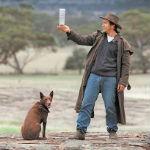International Volunteer Day 2013
03 December 2013
In recognition of International Volunteer Day the Bureau of Meteorology acknowledges the important contribution of its volunteer observers. Below we share the stories of a few of our dedicated volunteers in various locations around Australia.
Every day, thousands of volunteers around the nation assist the Bureau of Meteorology maintain Australia’s official climate record by observing and recording weather, climate and water data.
Volunteers have been contributing information to the Bureau since 1908. Today, the Bureau’s volunteer network is made up of more than 5000 rainfall observers, 2000 storm spotters, 300 river height observers and 80 ships at sea.
Data collected by these volunteers helps the Bureau maintain the National Climate Record, a historical record of weather observations which are recorded by human observers or instruments around Australia.
Volunteer rainfall observers
The largest volunteer contingent is the rainfall observers’ network, with more than 5000 stations scattered across Australia.
While the history of each site and volunteer is different, their dedication to the contribution of rainfall data and weather observations is uniform.
For some, checking the rainfall gauge has been part of the daily routine for generations.
Located in Trundle, New South Wales, the Curr family has been maintaining rainfall records since 1883 and their rainfall record is one of the Bureau’s most complete.
The Barnett Family of ‘Craglands’ in Montville, Queensland started their record in 1910, receiving a 100 Year Family Excellence Award in 2010.
Volunteers such as Victoria’s Steve and Sue Lowe contribute to an accurate weather record that will benefit the community today and into the future. The Lowe’s, from the King Valley wine region explain how the weather has played a major role in local grape and wine research projects.
Stephen and Sue Lowe have recorded observations in the Edi Upper Weather Station in Victoria's King Valley wine region since 1986.
For many, an interest in the weather can last a lifetime.
As a young adult, Tasmania’s Ralph Spinner would ride his bicycle to the summit of Mt Wellington to record unofficial observations from a home-made weather station. While the station was lost in the 1967 bushfires, the records remain. Mr Spinner started an official rainfall observation record for the Bureau in 1961 and was awarded a Volunteer Excellence Award in recognition of 50 years of service in October 2013.
Fiona Scott from McMinns Lagoon in the Northern Territory grew up watching her father record rainfall and started her personal record in 1980. Mrs Scott took over a friend’s official station in the mid-1990s. She continues to be fascinated by the nature of rainfall in the territory – particularly when 20mm can be recorded on one side of the lagoon and only 5mm on the other.
Observing the weather will continue as a way of life for generations to come.
In South Australia, the Burra Community School maintains an official rainfall station, one of more than 600 in the state. Students assist the groundsman in checking the gauge and recording observations.
Perhaps one day they will volunteer and continue to contribute to the Bureau’s National Climate Record.
South Australia's Burra Community School groundsman Derek Fletcher, and students, Tom Weich and Christie Sims.
Join us in saying 'Thank You' to our volunteers this International Volunteer Day!
Additional link:
Volunteer weather observers: over 100 years of vital data collection




Comment. Tell us what you think of this article.
Share. Tell others.